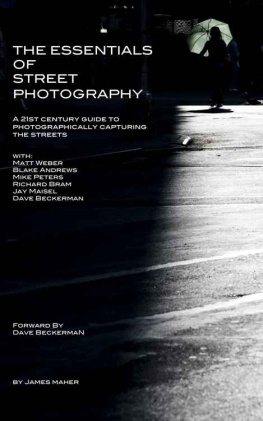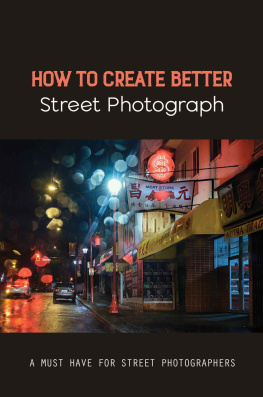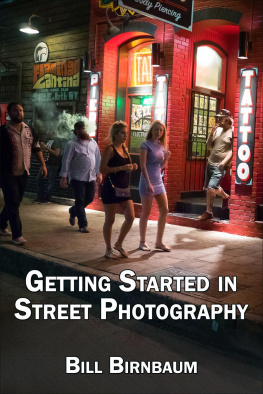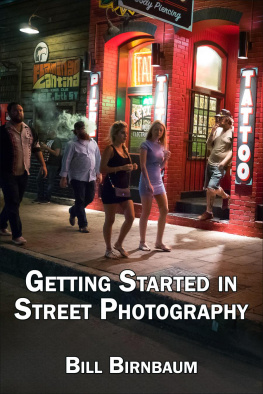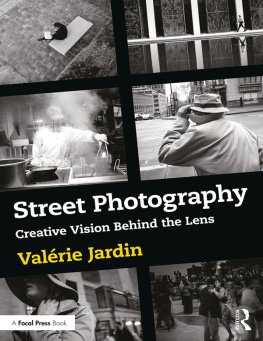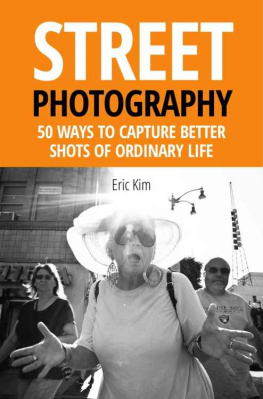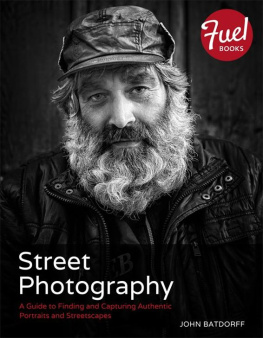James Maher - The Essentials of Street Photography
Here you can read online James Maher - The Essentials of Street Photography full text of the book (entire story) in english for free. Download pdf and epub, get meaning, cover and reviews about this ebook. year: 2012, publisher: James Maher Photography, genre: Romance novel. Description of the work, (preface) as well as reviews are available. Best literature library LitArk.com created for fans of good reading and offers a wide selection of genres:
Romance novel
Science fiction
Adventure
Detective
Science
History
Home and family
Prose
Art
Politics
Computer
Non-fiction
Religion
Business
Children
Humor
Choose a favorite category and find really read worthwhile books. Enjoy immersion in the world of imagination, feel the emotions of the characters or learn something new for yourself, make an fascinating discovery.
- Book:The Essentials of Street Photography
- Author:
- Publisher:James Maher Photography
- Genre:
- Year:2012
- Rating:5 / 5
- Favourites:Add to favourites
- Your mark:
The Essentials of Street Photography: summary, description and annotation
We offer to read an annotation, description, summary or preface (depends on what the author of the book "The Essentials of Street Photography" wrote himself). If you haven't found the necessary information about the book — write in the comments, we will try to find it.
It is about teaching you how to conceptually approach your work so that it has something to say.
In addition, learn from six talented street photography veterans in the Street Photography Conversations section. Learn first-hand the techniques of Matt Weber, who prowled the gritty, pre-Giuliani streets of New York in a taxi capturing the 80s crack epidemic and is the focus of the upcoming documentary, More Than The Rainbow. Hear from Blake Andrews, who does beautiful work in the quiet city of Eugene, Oregon. Learn how Richard Bram, Jay Maisel, Mike Peters, and Dave Beckerman all approach the streets in their own, diverse ways.
Few people know all of the tips, tricks and techniques to be able to consistently take meaningful, beautiful, and technically stunning street shots. No matter your skill level, there will be something important for you to learn in this book.
This books is not only for beginners.
I used to think that street photography was unteachable. Obviously, I was wrong, and thats a credit to you for thinking of and answering every problem one could possibly encounter out there on the mean streets of any city...
- Matt Weber, Street Photographer.
Whether you have a Leica, an SLR, a micro 4/3rds, a point-and-shoot, or a Hasselblad, you will be covered.
You Will Learn About:
How to overcome your fear of photographing strangers.
How to capture street photos with meaning.
All the tricks for capturing close-up candid portraits.
Camera settings and focusing techniques.
Composition and lighting.
Shooting from the hip successfully.
Street portraiture.
Capturing gesture, expression, and emotion and telling stories with your images.
How to foster themes within your work and create projects.
How to edit and organize your work and pick your best shots.
Post-processing and printing techniques.
Street photography learning exercises.
Interviews with Matt Weber, Blake Andrews, Mike Peters, Richard Bram, Jay Maisel, and Dave Beckerman.
And so much more!
James Maher: author's other books
Who wrote The Essentials of Street Photography? Find out the surname, the name of the author of the book and a list of all author's works by series.

